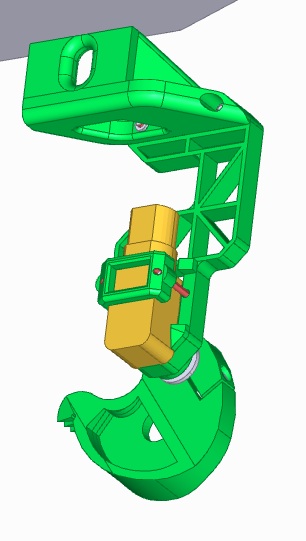

Date: 6th July 2017
‘What is CAD?’
In the past ‘CAD’ basically meant (2D) technical drawing using a computer. The advantages of this over the traditional hand-drawn approach were vast -similar in the engineering world to the adoption of the PC over the typewriter in the business world. It was a powerful and time-saving tool (and still is). An example would be when it is necessary to make a component or an assembly longer: with CAD you can do it instantly and save hours of redrawing and there are of course many other advantages. The term ‘CAD’ now covers a broad range of activities and people often get confused by what is being offered or presented.
3D modelling
3D modelling is the modern update on traditional 2D CAD. Put simply, it means that the component (or assembly of components) has been created in virtual space and exists as a precise mathematical model. This model can be used to create ‘renderings’ which can indeed be used as ‘artists impressions’ or the model can be processed into machine code and sent to a machine such as a 3D printer.

Artistic impressions
3D modeling is not only used in the field of engineering but is applied to many kinds of 3D graphics. The famous opening scenes in Game-of-Thones are animated 3D models.DONUTTTA problem exists for people without a technical background because an invention development company can create very impressive 3D models of something without there necessarily being any real engineering input at all.
An example of this was sent to me a couple of years ago. This was a kind of sprinkler system that was intended to spray not only fluids but also sand. It looked very impressive but there was no technical basis to it at all. No research had been carried out into the technical viability of the concept, no mock-ups had been made to test out the theory. The company had leapt straight from the idea inside the inventor’s mind to creating a beautiful product design but without doing any technical evaluation at all. The innovator believed that she now had a fully developed design that was ready to be manufactured whereas in fact she had nothing of the sort1. All she had were some impressive looking artist’s impressions of what the eventual product might look like. The point is, it is hard work and time consuming to try and make something actually work and it is relatively easy to create something ‘on paper’ that looks nice.
1. Checking her supplier’s contractual small print it was explained that the designs were intended to enable the client to present the idea to industry but cynically it had not been explained to her that the parts shown could not be made.
Don’t get ripped off
For the small-scale innovator embarking on this kind of technical voyage of discovery, it boils down to two things really: are you being offered what is effectively artist’s impressions or are you being offered something that can actually be used for engineering purposes? If the design is just intended to show the concept then it may be very different from something that can be used as part of the manufacturing process. If all you have are artist impressions the design may have to be redone completely.

What you need?
The most important question to ask is what you actually need the design work for? Marketing, tooling & production or proof-of-concept? When you are looking to have a prototype made you need to be sure that you are talking to the right people and that you are asking for the right thing. -Do you just want artists impressions in order to discuss the concept with investors?-Do you want 3D modelled products to enable you to cost up for production?
-Or do you want to make and test the idea before going further?